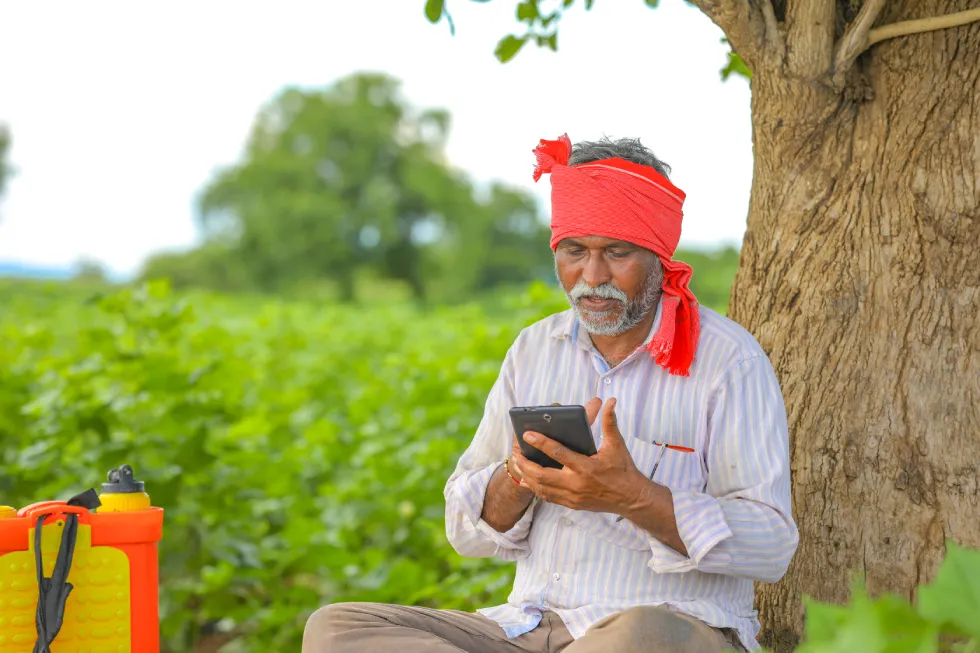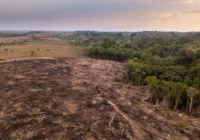The foundation of human civilization is agriculture. It was organized agriculture that allowed our nomadic forebears to settle down and create large settlements — cities — where the cultural arts could flourish. And, throughout history, the advancement of technology has been essential to the advancement of agriculture.
When I was at my farm a few weeks prior, making a few little mobile payments on my phone, I understood this more than I could have expressed. Fifteen years ago, my farm manager and I were motorbiking from pillar to post to obtain farm credit, to withdraw the cash, to use it to buy seeds and fertilizers, to arrange a tractor to plow the field and sow the seeds and to paying laborers. It took us almost two weeks to prepare the farms at the beginning of each season. At harvest time, similar delays ate up still more time.
But this year, it was all hassle-free and quick. India has rolled out a biometric ID system called Aadhaar. Every one of India’s 1.4 billion residents is able to sign up, linking their fingerprints, irises and face to a unique 12-digit code. Aadhaar has made it easy to obtain credit and make all payments through the Unified Payments Interface (UPI), an instant payment system run by the Indian state.
Another app draws on crowdsourced intelligence to help me select an efficient crop pattern, and yet another app tells me the weather forecast and suggests the right timing for sowing. My manager likewise can arrange all his logistics through his mobile only. It took less than three days, with almost zero headache, to make this happen.
Digital public infrastructure is revolutionizing India
Aadhaar, UPI and other tools like the Digi-Locker document storage system all are part of India’s digital public infrastructure (DPI) ecosystem, dubbed India Stack. It has streamlined governance, reduced corruption, revolutionized transactions and empowered citizens.
A recent World Economic Forum briefing paper estimated that DPI could add over $65 billion of value to the Indian agriculture sector alone.
The story of India’s digital revolution began a decade ago. In 2014, most Indians had no unique form of proof of identity. This stopped them from accessing public benefits. So, the Narendra Modi government implemented Aadhaar, which the previous Manmohan Singh government had launched in 2009. Now, nearly the entire population has enrolled in the program.
Other India Stack programs have achieved great success. UPI has facilitated 241 billion financial transactions since its inception, and Digi-Locker has facilitated the issuance of 7 billion documents to 300 million users.
Digitalization is helping India bridge the divide between city and country, between rich and poor and between those who work in traditional trades and those who work in emerging fields.
India’s DPI provides open access, or free and unrestricted access to use of digital resources by everyone. This openness and the interoperability it brings give more options to both consumers and vendors. Interoperability enables scaling while making room for the unique requirements of specific local-national-global situations.
At the G20 summit in New Delhi last year, India went big on her DPI success when Prime Minister Modi proposed a “Global Digital Public Infrastructure Repository” (GDPIR). GDPIR offers a virtual repository that collects and shares digital public infrastructure (DPI) tools and resources created by governments worldwide, including code and best practices. The repository aims to accelerate the development of DPIs globally, particularly in low- and middle-income countries, by providing access to proven digital solutions that support sustainable development goals. Its primary aim is to bridge the knowledge gap in the choices and methodologies required for the design, construction, deployment, and governance of DPIs. Currently, the repository contains 54 DPIs from 15 nations and the European Union.
In their book Four Internets, computer scientists Kieron O’Hara and Wendy Hall explain that the Internet is not truly open but really consists of four separate infrastructure systems upheld by different values. They call these systems the Beijing Paternal Internet, the Silicon Valley Paternal Internet, the Brussels Bourgeois Internet and the DC Commercial Internet. GDPIR, on the other hand, could be the basis for a truly open global Internet.
Other countries are keen to adopt the DPIs due to their low cost and scalability. Currently, almost a dozen nations have chosen India’s DPI Modules, utilizing Indian expertise to construct their own national ID systems. For example, the Philippines and Morocco successfully launched Aadhaar-like programs themselves.
The importance of DPI goes beyond the Global South. The EU–India Trade and Technology Council, the Quadrilateral Security Dialogue and even the Shanghai Cooperation Organization have acknowledged the importance of DPI for inclusive and sustainable development. In June 2023, Modi and US President Joe Biden made a joint statement that specifically mentioned the intent to create a “Global Digital Development Partnership” that would focus on enabling the “development and deployment of DPIs.”
For GDPIR to succeed, we will need to develop global standards, financing models and a multi-stakeholder governance mechanism. Inadequate safeguards and poor benchmarking could result in a malformed DPI. This could result in data breaches and other security risks, as well as intellectual property rights and privacy violations.
The world needs new norms to govern a digital infrastructure that facilitates the global movement of people, capital and information.
The views expressed in this article are the author’s own and do not necessarily reflect Fair Observer’s editorial policy.
Support Fair Observer
We rely on your support for our independence, diversity and quality.
For more than 10 years, Fair Observer has been free, fair and independent. No billionaire owns us, no advertisers control us. We are a reader-supported nonprofit. Unlike many other publications, we keep our content free for readers regardless of where they live or whether they can afford to pay. We have no paywalls and no ads.
In the post-truth era of fake news, echo chambers and filter bubbles, we publish a plurality of perspectives from around the world. Anyone can publish with us, but everyone goes through a rigorous editorial process. So, you get fact-checked, well-reasoned content instead of noise.
We publish 2,500+ voices from 90+ countries. We also conduct education and training programs
on subjects ranging from digital media and journalism to writing and critical thinking. This
doesn’t come cheap. Servers, editors, trainers and web developers cost
money.
Please consider supporting us on a regular basis as a recurring donor or a
sustaining member.
Will you support FO’s journalism?
We rely on your support for our independence, diversity and quality.







Comment